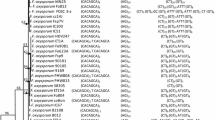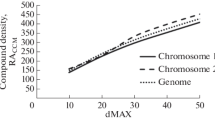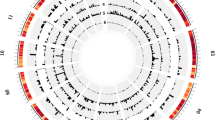Abstract.
The observed and expected frequencies of occurrence of microsatellites in the yeast Saccharomyces cerevisiae were investigated. In all cases, the observed frequencies exceeded the expected ones. In contrast to predictions by Messier et al. (1996), there is no critical number of repeats beyond which the observed frequencies of microsatellites significantly exceed the frequencies expected in a random DNA sequence of the same size. Rather, the degree of deviation from expectation was found to be dependent on the length of the microsatellite. That is, a fourfold concatemeric repeat of 3 bp was found to deviate from expectation as much as threefold concatemeric repeat of 4 bp, unlike the deviation of a fourfold concatemeric repeat of 4 bp. These findings suggest that microsatellites evolve through strand-slippage events, rather than recombination events. This, in turn, suggests that the chances of erroneous hybridizations leading to strand-slippage are length dependent.
Similar content being viewed by others
Author information
Authors and Affiliations
Additional information
Received: 1 June 1998 / Accepted: 16 September 1998
Rights and permissions
About this article
Cite this article
Pupko, T., Graur, D. Evolution of Microsatellites in the Yeast Saccharomyces cerevisiae: Role of Length and Number of Repeated Units. J Mol Evol 48, 313–316 (1999). https://doi.org/10.1007/PL00006474
Issue Date:
DOI: https://doi.org/10.1007/PL00006474




